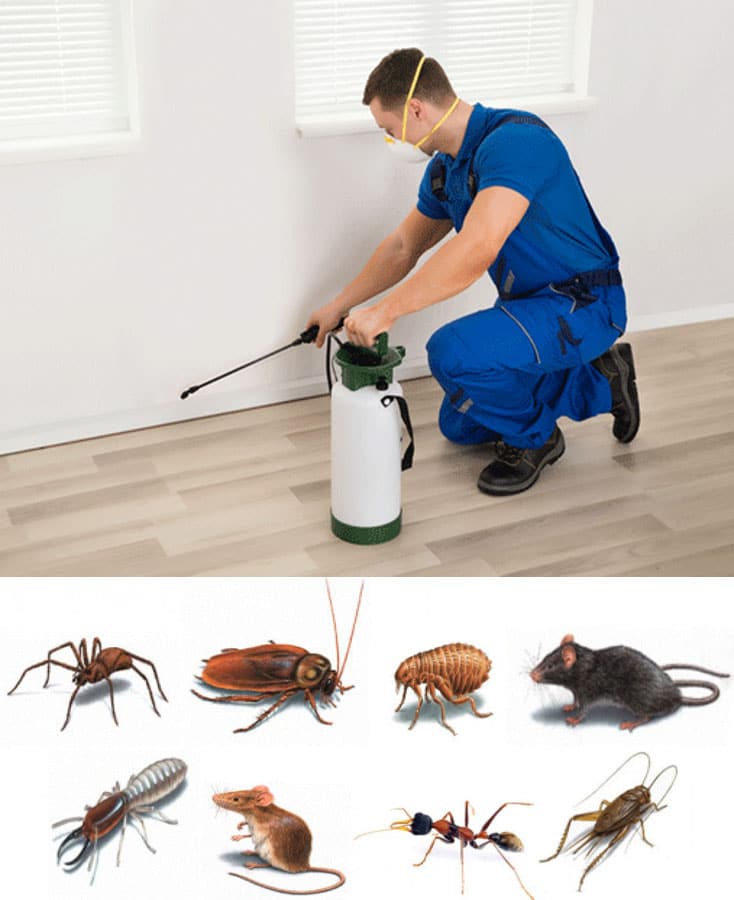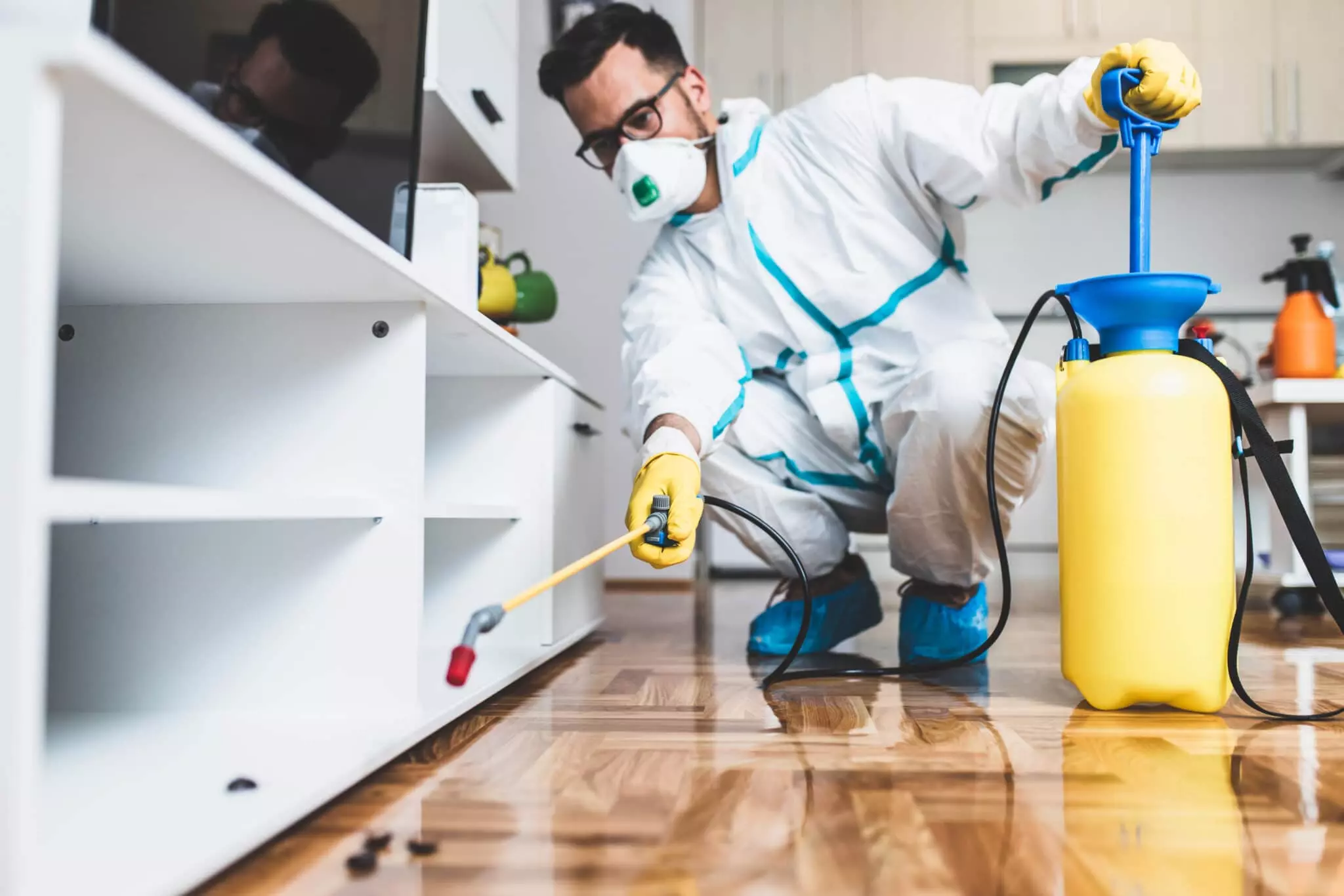Bed Insect Therapy Breakdown: Comparing Chemical Vs. Non-Chemical Solutions
In the world of bug control, specifically when handling the consistent problem of bed bugs, the choice in between chemical and non-chemical therapy options can be a pivotal one. Both approaches offer unique advantages and drawbacks, influencing factors such as performance, security considerations, and total expense. By taking a look at the nuanced details of each technique, a clearer understanding of which course to seek in addressing a bed pest infestation can be achieved.
Performance of Chemical Treatments
Chemical therapies for bed pest infestations have actually been widely identified for their potent and rapid effectiveness in removing these bugs. When thinking about the efficiency of chemical therapies, it is important to recognize that they can give a fast and comprehensive service to a bed pest problem. Specialist pest control men frequently rely upon pesticides to target bed bugs at numerous phases of their life cycle, including nymphs, grownups, and eggs. These chemicals typically function by disrupting the bed insects' anxious system, causing paralysis and ultimate fatality.
In addition, chemical therapies have the advantage of supplying recurring results, meaning that they can remain to eliminate bed bugs also after the preliminary application. This residual activity is specifically valuable in combating any type of prospective re-infestations. Additionally, the quick activity of chemical therapies can bring alleviation to people dealing with severe bed bug problems, permitting them to gain back control of their home rapidly.
Safety And Security Worries With Chemical Solutions
One critical element that requires cautious consideration when making use of chemical solutions for bed pest treatment is making sure the safety and security of passengers and the environment. While chemical therapies can be reliable in removing bed pests, they might posture risks if not managed properly. Among the main safety and security worries with chemical services is the prospective injury they can cause to human wellness. Direct exposure to specific chemicals made use of in bed insect treatments can bring about respiratory issues, skin irritation, or various other adverse responses, particularly in individuals with pre-existing problems or level of sensitivities. In addition, inappropriate application or dosage of chemical pesticides can result in poisonous deposits lingering in the treated area, posturing long-lasting health dangers to passengers.
Furthermore, the environmental influence of chemical services is another significant consideration. Some pesticides made use of in bed insect treatments may be damaging to valuable pests, wildlife, and communities if they seep into the soil or water systems. It is vital to make use of chemical therapies deliberately, complying with safety and security standards, and taking into consideration much less poisonous choices to mitigate these threats and guarantee the secure and efficient monitoring of bed bug problems.
Benefits of Non-Chemical Methods
Thinking about the potential safety worries and environmental impact connected with chemical services for bed bug therapy, exploring non-chemical approaches provides a promising alternative with several distinctive benefits. Non-chemical therapies are ecologically friendly, as they do not contribute to air or water air pollution, making them a lasting selection for bug control.
Additionally, non-chemical options can be effective in targeting bed bugs, consisting of hard-to-reach areas where chemical treatments may not penetrate - A1 bed bug exterminator charlotte. Techniques such as warmth treatment, vacuuming, heavy steam cleaning, and mattress encasements provide thorough eradication without the use of hazardous chemicals.
Limitations of Non-Chemical Treatments

In addition, non-chemical treatments typically need numerous applications to accomplish successful elimination. This can be lengthy and might not constantly pest control chemicals for home ensure full removal of all bed bugs and their eggs, particularly in hard-to-reach or surprise areas.
In addition, the success of non-chemical therapies greatly counts on correct implementation and thoroughness, which can be testing for individuals without expert competence. Insufficient application of non-chemical techniques might lead to insufficient obliteration, causing persistent invasions and the requirement for extra treatments.
Consequently, while non-chemical treatments have their benefits, it is necessary to acknowledge these limitations and consider them when establishing one of the most reliable technique for managing bed insect infestations.
Expense Contrast: Chemical Vs. Non-Chemical Options
Offered the restrictions connected with non-chemical treatments, an essential facet to assess in the context of bed pest administration is the price contrast between chemical and non-chemical options. Chemical therapies generally include the application of insecticides by experts, which can range from $250 to $900 per space, relying on the seriousness of the infestation and the dimension of the area to be dealt with. In comparison, non-chemical treatments like heat therapy or vapor can be extra pricey, with costs ranging from $1,000 to $6,000 for an entire home. While the initial price of chemical therapies may seem reduced, multiple treatments might be called for to fully get rid of the problem, potentially boosting the total expense. On the various other hand, non-chemical options may provide a more eco-friendly and lasting service, although they can be cost-prohibitive for some people. Eventually, when considering the cost of bed pest therapy choices, it is necessary to consider the in advance costs versus the effectiveness and long-term sustainability of the picked method.
Final Thought

Considering the possible safety worries and ecological influence associated with chemical options for bed bug treatment, checking out non-chemical methods provides an encouraging alternative with numerous distinctive benefits.Provided the restrictions linked with non-chemical treatments, an essential aspect to assess in the context of bed insect monitoring is the cost comparison between chemical and non-chemical alternatives. In contrast, non-chemical therapies like heat treatment or vapor can be much more costly, with expenses varying from $1,000 to $6,000 for an entire home. While the preliminary expense of chemical treatments may appear lower, several treatments may be needed to totally remove the problem, possibly raising the general cost.In conclusion, when comparing chemical and non-chemical bed bug treatment choices, it is vital to think about effectiveness, safety, benefits, limitations, and expense.